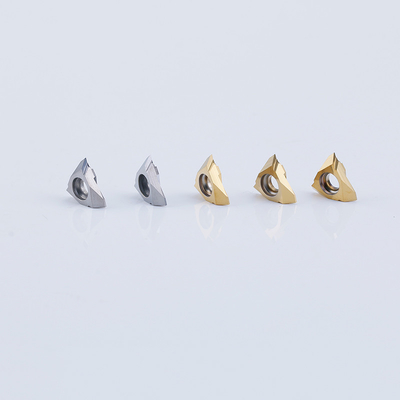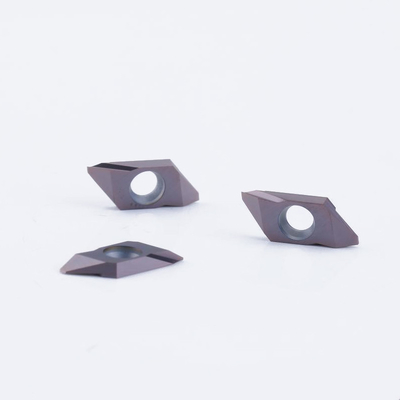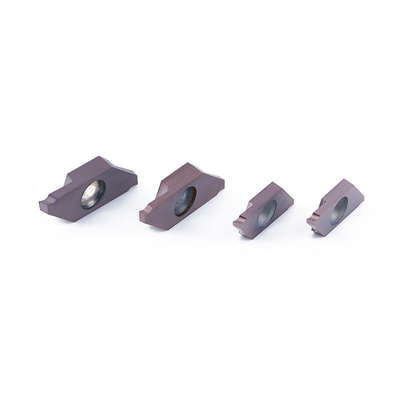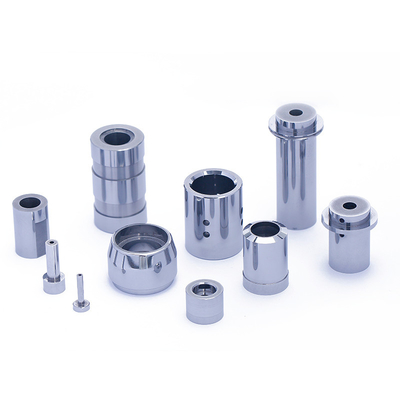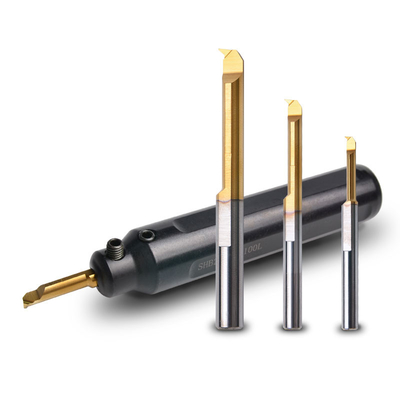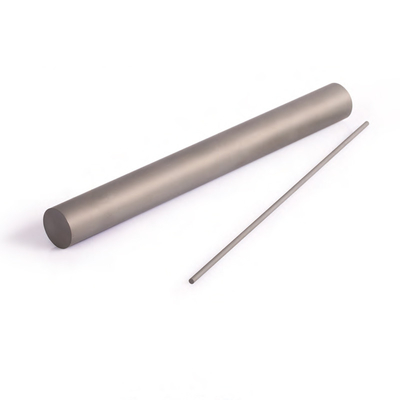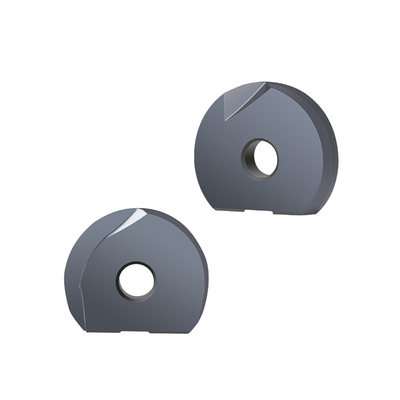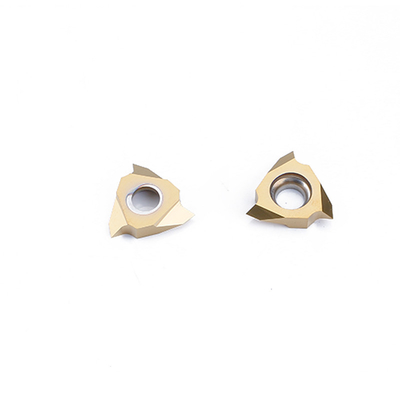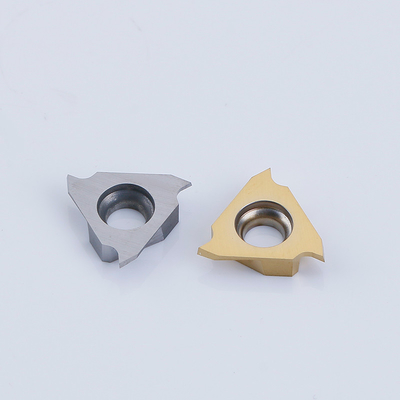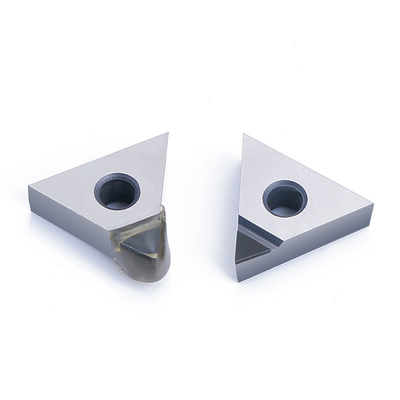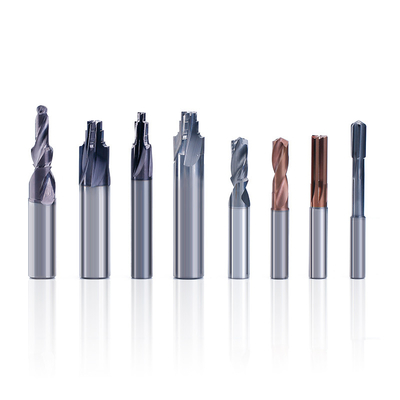How to choose the right carbide turning insert
Turning inserts are cutting tools used to machine different metals such as steel, carbon, cast iron, and superalloys. They are indexable, which means they can be rotated, flipped, and swapped with other inserts without disturbing the tool geometry.
However, when these cutting tools are manufactured with carbide materials, their strength is greatly increased and they display unique properties that lead machinists to use them. In this article you will learn what are carbide turning inserts? How to identify, what are the different types of carbide turning inserts and more. let's start.
What are Carbide Turning Inserts?
As mentioned earlier, they machine different metals with precision. You can change them, flip or rotate them, etc. The good news is that they are not welded to the machine and can be disassembled.
Carbide turning inserts are used at high speeds to achieve better and faster material surface finishes. This way, you also reduce damage to the carbide insert, the material, and the workplace. They are available in the market in various grades, sizes, styles, and more.
How to identify carbide turning tool inserts?
Researchers and developers have come up with an ideal system called turning tool ISO code system to identify carbide turning inserts. The advantage of using this coding system is that it is possible to select a specific carbide turning insert that exactly matches your needs.
ISO codes use the metric system, where measurements are in millimeters. Each specification of carbide inserts is accompanied by a special coding system associated with the following phrases:
Hand of a tool holder
Shank width
Insert clamping method
Holder style
Insert shape
Length of holder
Shank height
Cutting edge length
Insert clearance angel

These elements define the coding process which makes easy to select the carbide insert. The coding system is a universal framework which provides ease to manufacturers to select the right carbide insert.
TYPES OF CARBIDE TURNING INSERT
The carbide turning insert is available for multiple types each serving different application.
Following are its different types:
Turning carbide insert – These are used to deliver axially symmetrical shapes on a rotating workpiece with a stationary single point edge.
Threading carbide inserts – These types of inserts are also called threaded bushing and are specifically inserted in an object to deliver threaded hole.
Grooving carbide inserts – The grooving carbide inserts are used for cutting grooves either internally or externally. But it can also be used for various machining operations.
Milling carbide inserts – These are used for machining some of the toughest materials to cut or shape them like steel, titanium etc.
Drilling carbide inserts – These are used to drill large diameter holes. They run at much higher speeds are very economical.
Boring carbide inserts – The boring carbide inserts are used to enlarge an existing hole done by drilling inserts.
MANUFACTURING OF CARBIDE TURNING INSERTS
The carbide turning inserts are made into various shapes that functions for specific purpose. Due to this, the manufacturing is very careful to make sure the meet the accuracy and proper dimensions required. Here are some highlights on its manufacturing.
They are mainly made of carbide or tungsten in different proportions, and are originally in raw powder and wet form. Then in the workshop, the raw materials are mixed with water and ethanol to produce a mixed solvent.
The mixed powder is then transported to manufacturers in containers hat weigh 80 kg approximately. The powder is filled in dies in a specific order and pressurized up to 12 tons. But they are still weak.
Now the inserts are heated up to 1500 degrees celcius up to 13 hours in a sintering furnace to make it hard. This eventually melts it into cemented carbide. After acquiring targeted hardness, they are grinded to gain accurate sizes and geometry.
Now the inserts are passivated and coated. Then they are placed on turntable holders and transported to a coating furnace with lower coating pressure. The process of making inserts is completed once the coating procedure is done.
CARBIDE TURNING INSERTS ACCESSORIES AND TOOLS
To acquire best results, it is necessary to use carbide turning inserts with other accessories that are equally important. They are used during all workpiece operations.
The common accessories include:
Holders – It supports carbide turning inserts to make sure the insert is rigid and strong which minimizes the deflection and vibration during the operation.
Seat – It is a piece similar to the size of carbide turning insert which is placed between bottom of packet and insert where the insert fits tool holder.
Boring bars – they are cylindrical bars for internal machining to make holes in the machined material like solid carbide and steel etc.
Drill – It is a shaft with cylindrical shape and conical cutting tip having one or more helical flutes to let chips escape the workpiece during machining.
The carbide turning inserts, also known as indexable inserts are tools that cut the material in a machining process. They give great surface finishes on metal materials.
While the carbide turning inserts do such a good job, selecting the wrong carbide turning insert can ruin your material, project and costs you a lot. Therefore, the manufacturers working with with machining operations need to completely understand what to look for in selecting the right carbide turning insert. They should be able to read the codes, and understand what shape and geometry they require to fit their need.
In this article, you will get to know exactly what are the factors that you need to consider for selecting the right carbide turning insert.
CONSIDERATION FOR RIGHT CARBIDE INSERT SELECTION
Following the parameters that need to be considered to attain good chip control and machining performance.
GEOMETRY
The geometry is divided into three categories upon the basis of operation. They are:
Medium – ideally for light roughing or medium operations with wide range of cut depth.
Roughing – It is the combination of high feed rate and depth of cut and suitable for most operations requiring high edge security.
Finishing – Feasible for light depth of cuts and has low feed rates. It is best for machining operations that require low cutting forces.
GRADE
The grades of carbide turning inserts are based on following factors:
Operation method (roughing, medium or finishing)
Material of component
Machining conditions like difficulty, average or good.
In fact, the tool grade and geometry go hand in hand. For instance, the toughness of a tool’s grade can be compensated with low strength in geometry.
SHAPE
While selecting the carbide turning insert, make sure the tool has correct entering angle. It is preferred to choose the largest nose angle available that provides insert and reliability but it also needs to be balanced with cuts variation.
Though the large nose angle is sturdier but in fact it requires higher machine power and as a result also causes higher vibrations during machining. On the contrary, small nose angle is weak but gives small engagements with cutting edge resulting in lesser vibrations which is why the tool is sensitive to heat effects.
SIZE
Carbide turning insert should be selected according to specific purpose and application. For better stability, it is preferable to use large sized carbide turning inserts. For using carbide inserts on heavy machining process, use size above IC 25mm.
The largest depth of cut is always ideal option for the selecting the right carbide turning insert. For determining tool holder entering tool and machine specifications etc consider the cutting length of carbide inserts.
MACHINING MATERIALS
The carbide turning inserts are used to machine many materials. The names of few are as below:
Soft tool steel
Aluminum
Bronze
Non-ferrous metals
Cast irons
High hardness materials
Hardened tool steel
Stainless steel
Titanium alloy
FACTORS FOR CONSIDERATION WHILE SELECTING IDEAL CARBIDE TURNING INSERT
Following are some of the most important elements that should be considered for selection of carbide turning insert:
ADVANCED EQUIPMENT
Consideration of manufacturer is important. It decides whether the product is high quality. An ideal manufacturer should have one of the best facilities and machinery. It should have skillful resources and best CNC production line.
BROAD VARIETY
Since for different applications, carbide turning inserts with various sizes are used, users should prefer such manufacturer that produces many varieties of carbide inserts. This proofs the manufacturer is reliable to make a purchase and buy his product.
AFTER SALES SERVICE
Using a carbide turning insert on a project is daunting one as the tool is prone to damage or destroy the material itself. In that case, a manufacturer who gives sufficient after sales services should be opted. The after sales provided builds the trust over customer.
ANSI DESIGNATION OF CARBIDE TURNING INSERT
A coding system is developed by American National Standards Institute that determines the selection of right carbide turning insert. It consists of letters and numbers that describes the shapes, dimensions and other parameters.
Below are some of the parameters presented by the ANSI coding system:
CLEARANCES
Clearances are also relief angle value. The purpose of the clearances is to prevent wall of the carbide inserts to rub with the part that offers inferior machining. The ANSI B212, 122-1991 has given standard with nine relief angle denoted by capital letters.
The angles are measured from 90-degree difference to the plane of normal to cutting edge.
TOLERANCES
It is the level of accuracy of carbide inserts during machining. There are fourteen tolerances classes that are offered for the inserts.
Letter A, B and T defines dimensional tolerances where A is inscribed circle dimension, B is height of trigon, pentagon or triangle shape and T is the dimension of thickness.
SIZE
It defines the carbide insert’s cutting edge length. The measurement is defined by either one or two-digit number indicating inscribed circle’s value. Furthermore, it also defines number of eights in an inch.
CONCLUSION
The selection of right carbide turning insert will save great time, cost, and will deliver quality finish. On the other hand, careless selection of the carbide insert will destroy your product and will costs much to your business. Though there are many parameters defined by ANSI coding system, the users of such tools should be aware of at least the basic parameters by ANSI in order to select the right carbide insert.
If you are interested in purchasing carbide turning inserts, please contact me : drowpa@163.com

 Your message must be between 20-3,000 characters!
Your message must be between 20-3,000 characters! Please check your E-mail!
Please check your E-mail!  Your message must be between 20-3,000 characters!
Your message must be between 20-3,000 characters! Please check your E-mail!
Please check your E-mail! 
